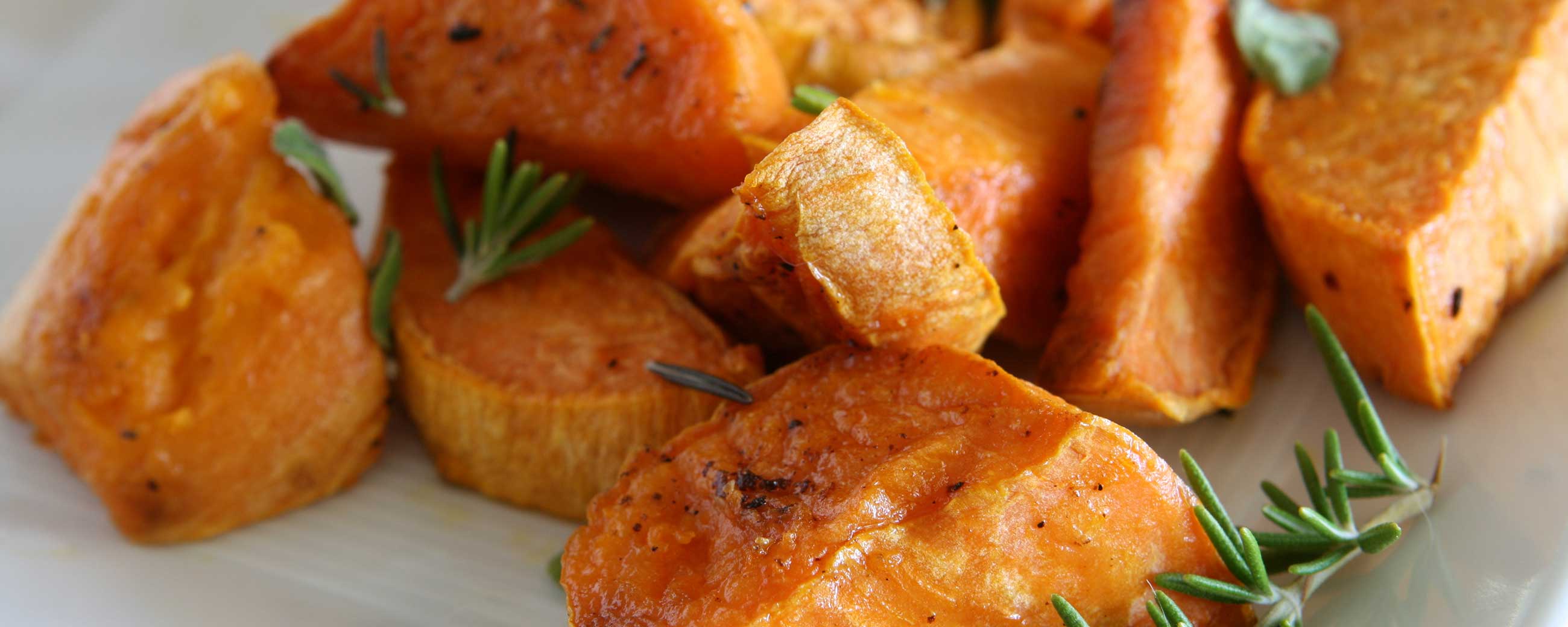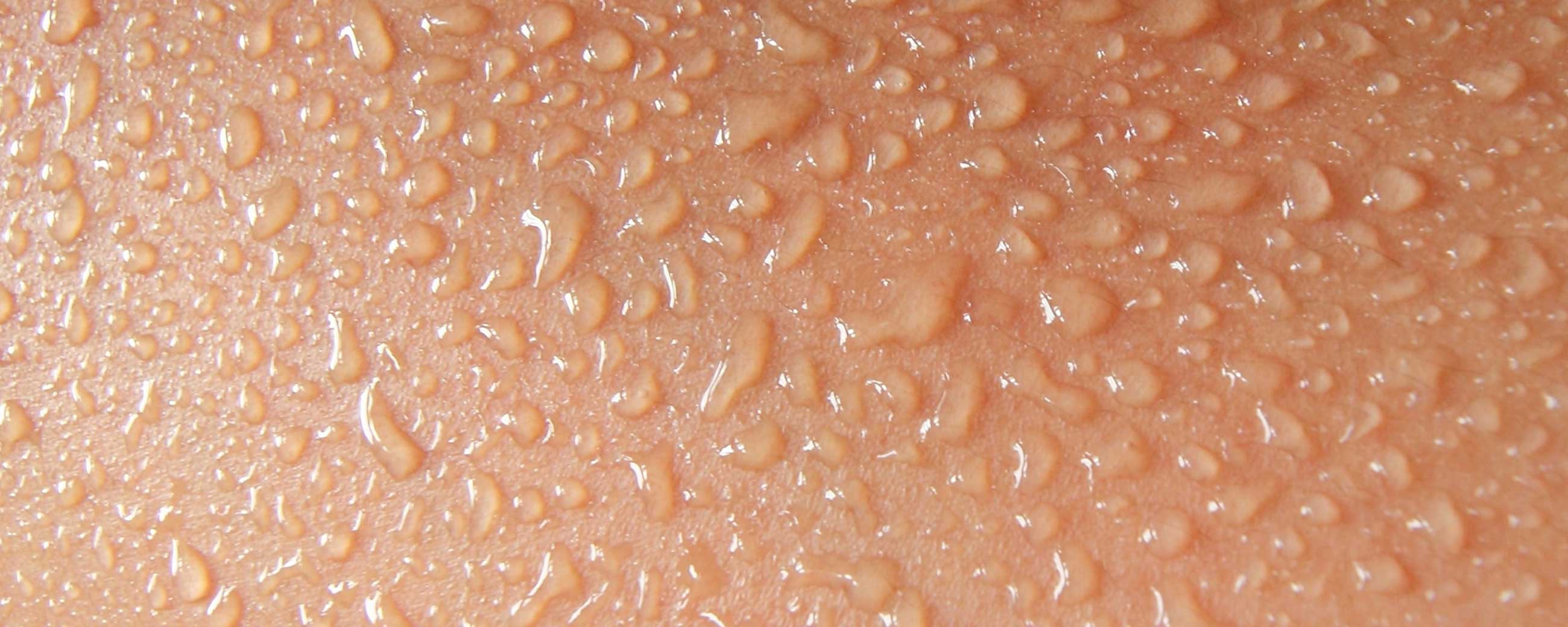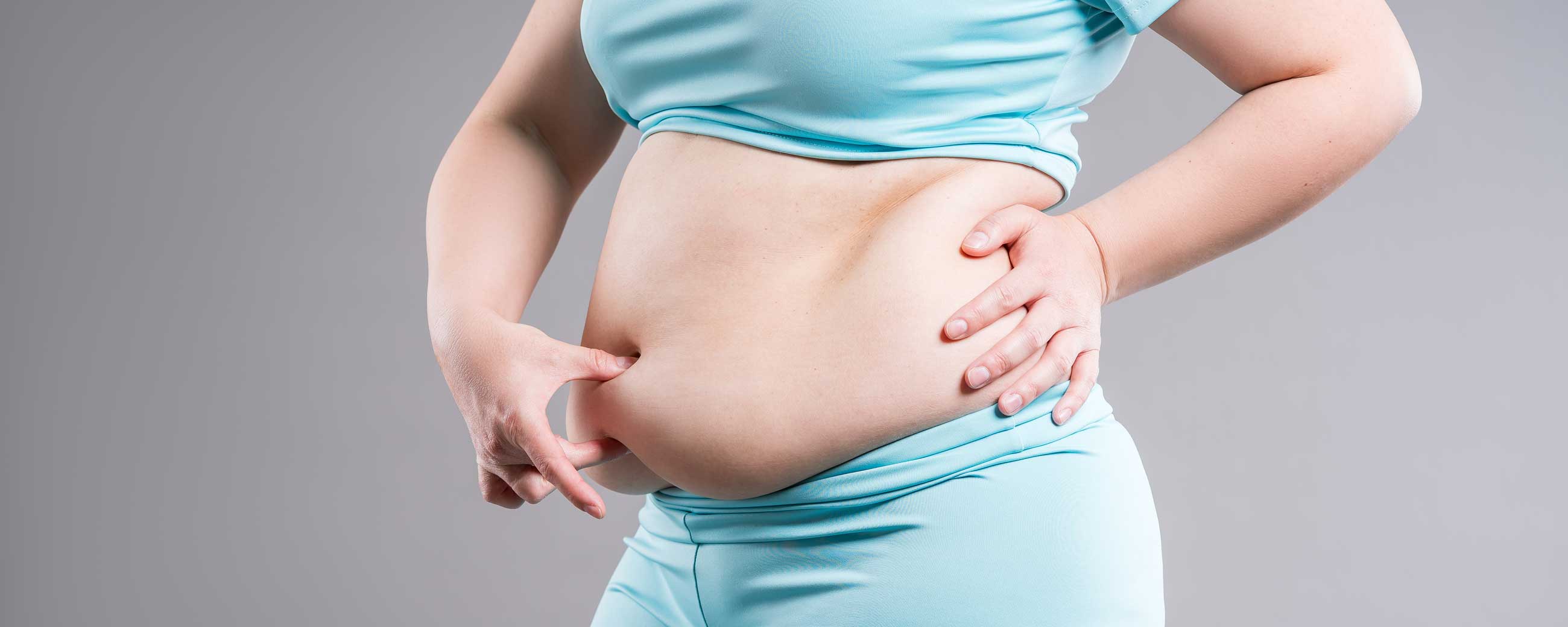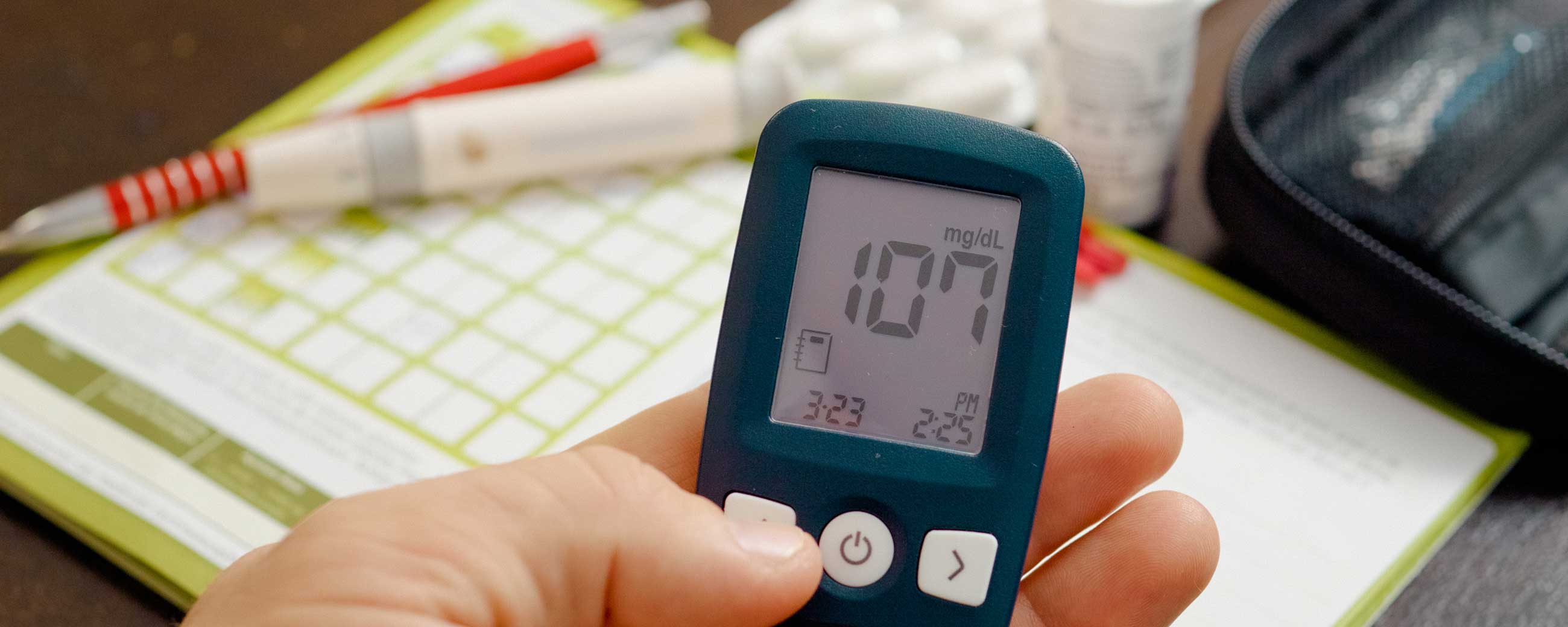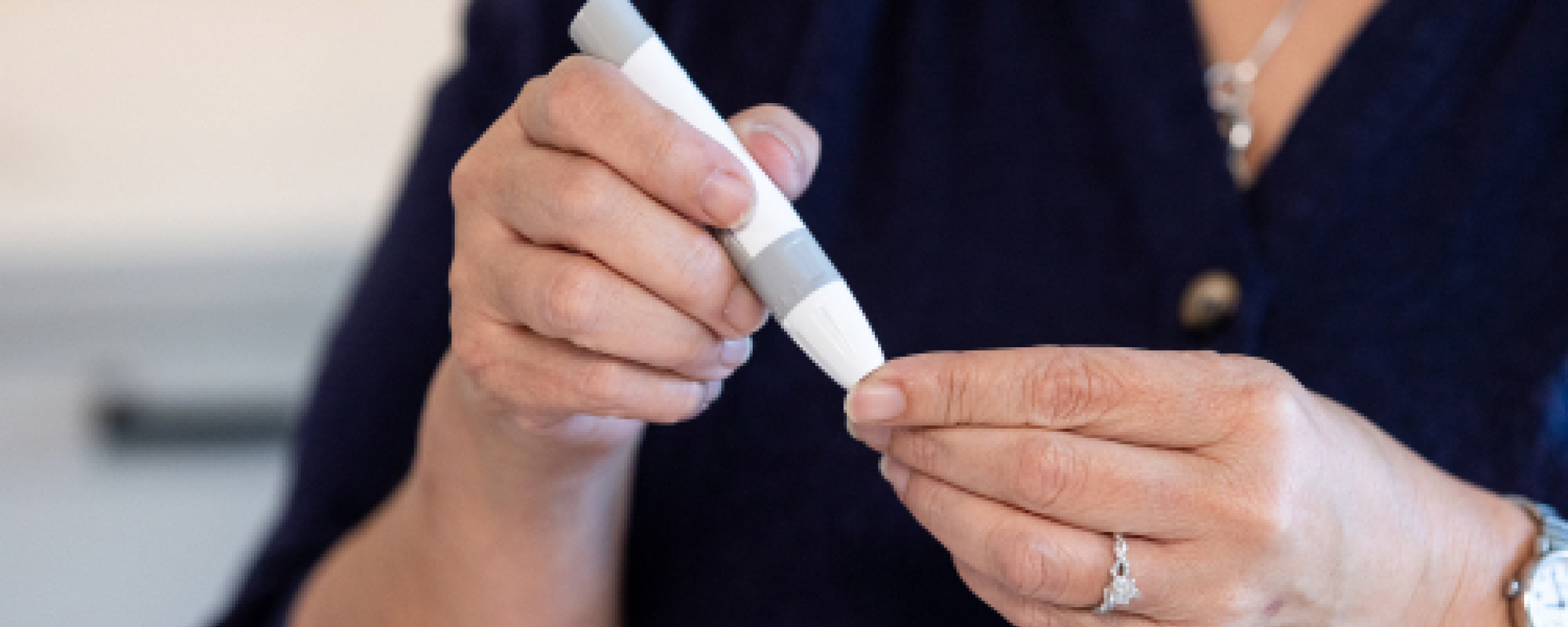
5 Ways to Lower High Blood Sugar

High blood sugar, also known as hyperglycemia, occurs when your body either doesn't respond properly to insulin (a hormone) or too little insulin is produced. Insulin is essential to transport glucose (or sugar) into cells for energy. High blood sugar is a hallmark of type 2 diabetes and lowering it is crucial when it comes to decreasing your risk for serious health complications such as heart disease, kidney disease, and vision loss.
What causes high blood sugar?
There are a number of factors that can spike your blood sugar, including activity, stress, and illness. However, food has the most direct role in elevating blood sugar, and it comes down to how our body reacts to carbohydrates. High amounts of carbs are found in many of our “staple” foods, including bread, pasta, fruit, potatoes, and other starches. When we eat carbohydrates, they break down into glucose, or sugar, that enters the bloodstream. Everyone has a different tolerance to carbohydrates. In people without type 2 diabetes, when blood sugar levels rise after eating, the body responds by releasing enough insulin to return blood glucose to a normal level.
In type 2 diabetes the body’s cells don’t respond normally to insulin (insulin resistance) People with type 2 diabetes can tolerate fewer carbs than someone without diabetes because when their blood sugar rises, their body either doesn’t produce enough insulin or isn’t responding to insulin. So blood sugar remains elevated.
We sometimes refer to this as “carbohydrate intolerance.” It’s important for a person with type 2 diabetes to monitor how many carbs they’re eating and what types of carbs might cause a spike in their blood sugar.
Why haven’t I been able to lower my blood sugar in the past?
You may have struggled with lowering your blood sugar in the past – and it’s not your fault! Many diets that we traditionally think of as “healthy,” including those that encourage a high intake of carbs like whole grains and legumes, are not always “healthy” for people with insulin resistance.
It’s a lot to keep straight and there are countless diets out there – paleo, Atkins, Mediterranean, you name it. Getting familiar with the basics behind the science of how diet impacts blood sugar can be helpful – here is a good place to start.
Risks of high blood sugar
There are several potential risks of chronically elevated blood sugar, including:
- Heart disease or heart attack
- Stroke
- Kidney damage
- Nerve damage
- Eye damage
- Skin problems
5 Ways to lower high blood sugar
Here are a few ways to lower high blood sugar–in both the short and long term.
- Reduce your dietary carbohydrates
Reducing your carbohydrate intake can lower blood sugar levels, reduce reliance on diabetes medications, and lead to weight loss¹. Low carb approaches are particularly powerful for people with type 2 diabetes and other conditions relating to insulin resistance, because they are often carbohydrate intolerant – meaning that it’s difficult for the body to process and use carbohydrates for energy. People following a low carb diet can see significant A1c improvements in as little as two weeks².
Virta uses a low-carb approach paired with 1:1 coaching and medical supervision via an app to not only lower blood sugar, but actually reverse diabetes. We define diabetes reversal as the process of returning blood sugar below 6.5% without diabetes-specific medication (other than metformin). Remission happens when blood sugar remains under 6.5% for three months or more, with no glucose-lowering medication³. Learn more about how diabetes can be reversed here.
When it comes to dietary changes to lower blood sugar, many people think eating low carb means high protein – but protein actually has a moderate insulin-stimulating effect, so a moderate protein intake, adequate to support structural and functional needs of the body, is often best for people with type 2 diabetes. Fat, on the other hand, can help to stabilize blood sugar. Low carb, moderate protein, and adequate amounts of fat are the basic principles behind a well-formulated ketogenic diet – an eating pattern that’s been shown to bring blood sugar down and even reverse type 2 diabetes¹.
- Medication (if prescribed)
There are a number of different medications to help lower blood glucose level, including insulin, which helps to control blood sugar for people with type 2 diabetes. However, while insulin is the quickest way to lower blood sugar, there are a number of ways to naturally lower your blood sugar levels without the side effects of medication.
- Calorie restriction
A low-calorie diet has been shown to reverse type 2 diabetes and high blood sugar but can be difficult to maintain in the long run⁴. A low-calorie diet not only requires balancing your carbs, protein, and fat intake, but also extensive meal planning so your basic nutritional needs are being met. Very low-calorie diets should really only be undertaken with medical supervision, especially if they require under 1,000 calories per day. While extreme calorie restriction for some may reverse type 2 diabetes, it’s important to note that it’s often not sustainable. In one study, only 7% of participants were able to achieve diabetes remission after 5 years⁴.
- Manage stress and sleep
From illness to personal upheavals, to less than adequate sleep, we all know that life happens. And stress is known to impact blood sugar levels.
When you’re stressed, your body’s adrenaline levels rise and more glucose from the liver is released in order to ensure your body has enough energy. This can mean higher blood sugar. . Reduce stress in your life by committing to a meditation practice, breathing practices, and ensuring you’re getting at least six to eight hours of sleep.
- Quit smoking, and limit alcohol use
Drinking less alcohol and quitting smoking can also help bring your blood sugar down. Smoking can increase the risk for other health complications, like heart and kidney disease, for people with type 2 diabetes.
Alcohol consumption can also interact with some diabetes medications, so make sure you consult your doctor about what’s right for you.
Alcohol is best enjoyed only in moderation – and watch out for sugary drinks like sweet cocktails or dessert wines that can contain hidden carbs.
In closing
Many people worry that they will struggle with high blood sugar for the rest of their lives. But there’s good news – it is possible to reverse high blood sugar and escape the cycle of constant highs and lows. For many, high blood sugar can be reversed naturally—without medications and surgery—you can learn more about how Virta does this here.
The methods discussed in this article are all powerful ways to lower high blood sugar – but it’s not always easy to make lifestyle changes. We totally get that. If you need a little extra support – see if Virta’s reversal program is available to you at no out of pocket cost.
FAQs
Is it possible to lower blood sugar naturally?
There are a number of ways to lower blood sugar naturally, including reducing your carb intake, managing your stress and sleep levels, quitting smoking and limiting alcohol consumption, and changing up your diet by reducing your carb intake, among other manageable methods.
Can you lower blood sugar instantly?
Typically, the quickest way to reduce your glucose levels is to take fast-acting insulin. However, people following a very low carb diet can lower their blood sugar quickly, in as little as two weeks².
Can blood sugar be lowered without insulin?
Yes. Following a low-carb diet, using stress management tools, quitting smoking, and limiting alcohol consumption are all known to help lower blood sugar. Insulin is typically not a “first line” treatment for high blood sugar and is usually only prescribed when blood sugar is considered chronically uncontrolled. Even for people on insulin, it is possible to lower blood sugar and eliminate medications – read more here.
This blog is intended for informational purposes only and is not meant to be a substitute for professional medical advice, diagnosis, or treatment. Always seek the advice of your physician or other qualified health provider with any questions you may have regarding a medical condition or any advice relating to your health. View full disclaimer
Are you living with type 2 diabetes, prediabetes, or unwanted weight?

- Hallberg, Sarah J et al. “Effectiveness and Safety of a Novel Care Model for the Management of Type 2 Diabetes at 1 Year: An Open-Label, Non-Randomized, Controlled Study.” Diabetes therapy : research, treatment and education of diabetes and related disorders vol. 9,2 (2018): 583-612. doi:10.1007/s13300-018-0373-9
- Boden, Guenther et al. “Effect of a low-carbohydrate diet on appetite, blood glucose levels, and insulin resistance in obese patients with type 2 diabetes.” Annals of internal medicine vol. 142,6 (2005): 403-11. doi:10.7326/0003-4819-142-6-200503150-00006
- Riddle, Matthew C et al. “Consensus Report: Definition and Interpretation of Remission in Type 2 Diabetes.” Diabetes care, vol. 44,10 2438–2444. 30 Aug. 2021, doi:10.2337/dci21-0034
- Lean, Michael E J et al. “Durability of a primary care-led weight-management intervention for remission of type 2 diabetes: 2-year results of the DiRECT open-label, cluster-randomised trial.” The lancet. Diabetes & endocrinology vol. 7,5 (2019): 344-355. doi:10.1016/S2213-8587(19)30068-3


